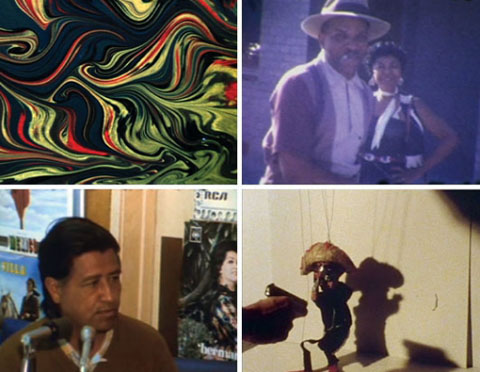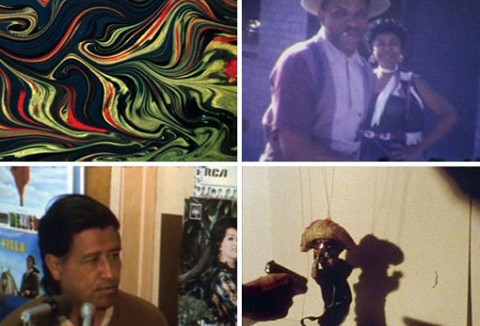

UCLA Film and Television Archive to Showcase Several Rare Short Films as Part of “Celebrating Orphan Films” Series

UCLA Film & Television Archive is pleased to partner with Los Angeles Filmforum and New York University’s Orphan Film Symposium to present an eclectic mix of screenings and discussions at the Billy Wilder Theater.
The Orphan Film Project consists of ongoing collaborations among archivists, lab and technology experts, scholars, filmmakers, curators and collectors with a shared passion for saving and screening neglected films from outside the commercial mainstream: home movies, outtakes, news film, sponsored works, silent-era cinema, fragments and experimental films.
Join archivists, film historians, artists, technical experts and scholars as they discuss their efforts in finding, researching and presenting these rare gems.
Single $10 pass admits to all screenings: http://www.cinema.ucla.edu/events/2011-05-13/celebrating-orphan-films.
Screenings include:
[Animated TV station ID reel] (TV Graphics Inc, early 1960s) – 2mim – 16mm Demo reel of Mad Men-era, mid-century modern broadcast ephemera by TV Graphics Inc., an advertising company owned by Disney artist Mary Blair’s husband, Lee Blair; featuring the work of Lee’s brother, animator Preston Blair.
[Meadow Gold TV spots] (Mary Blair, TV Graphics, Inc., mid-1950s] 2mim — 16mm Charming commercial animation featuring characters from Blair’s award-winning Little Golden Book, I Can Fly, first published in 1951. From UCLA Film & Television Archive
[Robert Abel Promo Reel; includes 7-Up “bubbles ad”] (ca. 1974) 8 min — 35mm This 35mm promotional reel highlights the work of pioneering visual effects firm Robert Abel & Associates, and includes the iconic, award-winning 7-Up television advertisement “Bubbles.”
[Designed by Saul Bass: The Alcoa Account] Noted as a pioneer of distinctive credit sequences and posters for Hollywood feature films, Saul Bass’ equally intriguing modernist television work is much less well-known. Some of these broadcast works, including title sequences and commercials for the Aluminum Corporation of America, reveal that Bass was not only a student of artist, designer, and theorist György Kepes, but also of filmmaker Sergei Eisenstein, the father of montage. Presented by Jan-Christopher Horak, Director, UCLA Film & Television Archive.
+ UFOs (Lillian Schwartz and Ken Knowlton, 1971) and Galaxies (Lillian Schwartz, 1974). “Lillian Schwartz is best known for her pioneering work in the use of computers for what has since become known as computer-generated art and computer-aided art analysis, including graphics, film, video, animation, special effects, Virtual Reality and Multimedia. Her work was recognized for its aesthetic success and was the first in this medium to be acquired by The Museum of Modern Art.”
+ Rain Dance – After Hurricane Katrina floods devastated the New Orleans home of filmmaker Helen Hill and her husband Paul Gailiunas, all that remained of this animated student film was a 16mm work print with no soundtrack. The first of three films she made while an undergraduate at Harvard, RAIN DANCE shows Hill’s fondness for the cut-out animation style of Lotte Reiniger. After her death in 2007, Colorlab and Harvard Film Archive made possible the immediate preservation of nine of her works. At BB Optics, Bill Brand and NYU MIAP students worked with Gailiunas to reconstruct the film and its lost soundtrack.
+ Fast Fax (1997-98) Animator Helen Hill made these witty whimsical micro-interstitials (of 3 to 15 seconds duration) for the Canadian Broadcast Corporation’s educational TV series Street Sense. Thanks to the research of NYU student Jim Bittl, the original CBC broadcast masters were preserved in 2010 and copies deposited with the Helen Hill Collection, Harvard Film Archive.
